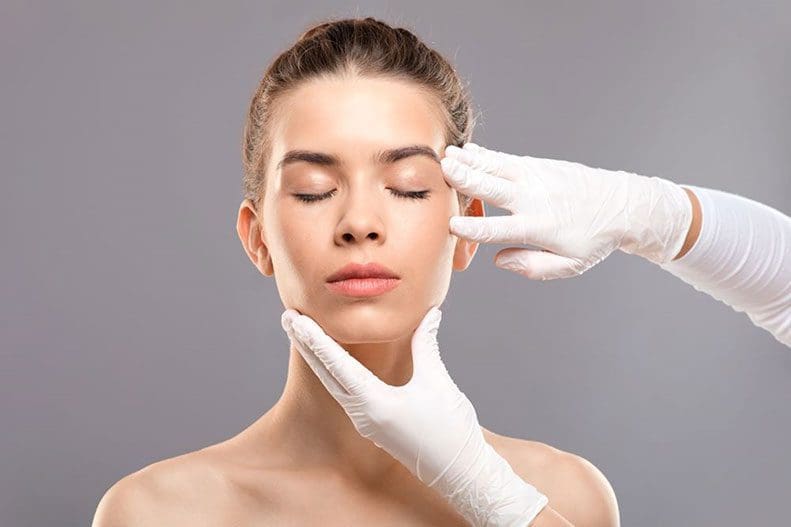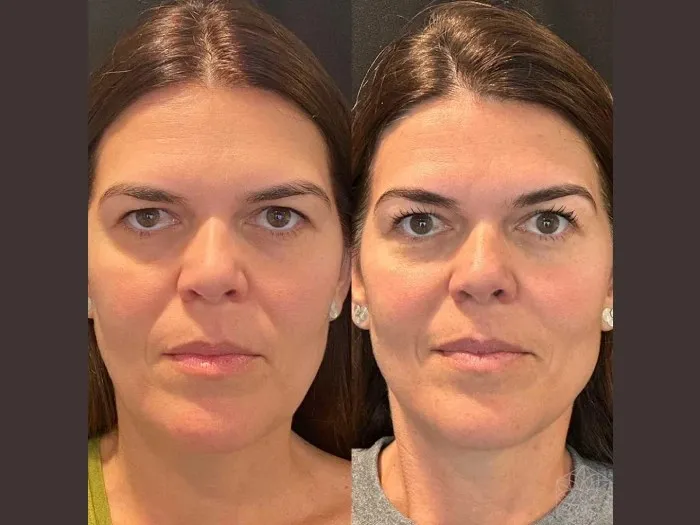
The pursuit of youthful, lifted, and glowing skin has made dermal fillers one of the most sought-after aesthetic procedures worldwide. Among these, Cheek Fillers in Dubai stand out for their ability to restore lost volume, define facial structure, and rejuvenate skin texture. But beyond the instant volumizing effects, many people wonder — can cheek fillers actually stimulate natural collagen production? The answer lies in how these injectables interact with your skin’s biology and support its natural regenerative processes.
Understanding the Role of Collagen in Facial Aging
Collagen is the protein that keeps our skin smooth, plump, and elastic. Unfortunately, starting in our mid-20s, collagen production begins to decline by about 1% every year. By the time we reach our 40s or 50s, this loss becomes more visible, leading to sagging cheeks, hollow under-eyes, and deepened folds around the mouth.When collagen diminishes, the underlying support structure of the skin weakens — resulting in volume loss and dullness. This is where cheek fillers become transformative. Modern filler formulations not only replenish lost volume but also stimulate the body’s own collagen synthesis over time.
How Cheek Fillers Work: More Than Just Volume?
Cheek fillers are typically made of Hyaluronic Acid (HA), a naturally occurring sugar molecule found in the skin that binds water and keeps tissues hydrated and plump. When injected into the cheeks, HA fillers do the following:
| Mechanism | Effect on Skin | Collagen Impact |
|---|---|---|
| Immediate Volume Restoration | Fills hollow areas and enhances cheek contours | Supports facial structure instantly |
| Water Retention | Hydrates and softens skin from within | Creates a supple and dewy appearance |
| Cellular Stimulation | Triggers fibroblast activity | Encourages collagen and elastin synthesis |
| Long-Term Structural Support | Improves tissue integrity | Promotes lasting firmness and skin resilience |
Collagen Stimulation Explained
The collagen-stimulating potential of cheek fillers depends largely on how the skin responds to the micro-trauma caused by injections and the presence of HA. Here’s how the process unfolds:
Injection Phase: When the filler is injected, it slightly disrupts the dermal matrix. This micro-injury prompts the skin to initiate a natural healing response.
Fibroblast Activation: Fibroblasts — the skin’s collagen-making cells — become activated to repair the “injured” area by producing new collagen fibers.
Long-Term Remodeling: Over the following weeks and months, this collagen remodeling enhances skin thickness, firmness, and elasticity, even as the filler gradually metabolizes.
Hyaluronic Acid vs. Biostimulatory Fillers
Not all fillers work the same way. Some are primarily volumizing, while others are collagen-stimulating.
| Filler Type | Main Ingredient | Primary Function | Collagen Stimulation |
|---|---|---|---|
| Hyaluronic Acid (HA) | Naturally occurring sugar | Adds volume, hydrates, smooths | Moderate (stimulates fibroblasts indirectly) |
| Calcium Hydroxylapatite (CaHA) | Mineral-like compound | Lifts and contours | Strong collagen stimulation |
| Poly-L-Lactic Acid (PLLA) | Synthetic biodegradable polymer | Gradually replaces lost collagen | Strong collagen regeneration |
| Polymethylmethacrylate (PMMA) | Microspheres in collagen gel | Provides structural support | Mild to moderate stimulation |
Visible Benefits of Collagen Stimulation Through Cheek Fillers
Patients who undergo cheek filler treatments not only see an immediate lift but also notice ongoing improvements in skin texture and tightness over time. These benefits include:
Enhanced cheek volume and definition
Improved skin firmness and elasticity
Reduced appearance of wrinkles and folds
Smoother skin surface and refined texture
More youthful, balanced facial proportions
How Long Does Collagen Stimulation Last?
The longevity of results depends on various factors such as filler type, metabolism, and lifestyle. Typically, HA fillers last 9 to 18 months, but the collagen that forms as a result of the treatment can extend the youthful appearance even longer.A healthy lifestyle — including hydration, sun protection, and proper skincare — helps preserve the new collagen network and prolongs the rejuvenated effect.
Ideal Candidates for Collagen-Boosting Cheek Fillers
Cheek fillers are suitable for men and women who experience early to moderate facial volume loss or want to enhance cheek structure while improving skin quality. You might be an ideal candidate if you:
Have sagging or hollow cheeks due to aging or weight loss
Want subtle lift and definition without surgery
Prefer natural-looking rejuvenation
Wish to improve skin texture and glow
Treatment Process: What to Expect
A typical cheek filler session involves:
Consultation and Assessment – The practitioner evaluates facial symmetry, volume loss, and desired results.
Preparation – The skin is cleansed, and a topical numbing cream is applied.
Injection Phase – Small, precise amounts of filler are injected using a fine needle or cannula to achieve balanced contours.
Shaping and Integration – The filler is gently massaged to blend naturally with the facial structure.
Post-Treatment Care – Patients can resume most activities immediately, with only minor precautions for a few days.
Comparing Collagen Impact: Fillers vs. Other Treatments
| Treatment Type | Immediate Volume | Collagen Stimulation | Longevity |
|---|---|---|---|
| Cheek Fillers | Yes | Moderate to strong | 9–18 months |
| Microneedling | No | Moderate | 6–12 months |
| Radiofrequency | No | Mild to moderate | 6–12 months |
| Thread Lift | Mild | Moderate | 12–18 months |
Maintaining the Results
To maintain the results of cheek fillers and their collagen-stimulating benefits:
Follow a consistent skincare routine rich in antioxidants and hyaluronic acid.
Protect your skin from UV rays to prevent collagen breakdown.
Stay hydrated and adopt a balanced diet with collagen-supporting nutrients.
Schedule regular touch-up sessions as advised by your practitioner to sustain results.
FAQ’s:
1. Do cheek fillers really increase collagen production?
Yes. The injection process and filler material activate fibroblasts, leading to new collagen formation that enhances skin strength and texture over time.
2. How soon can I see collagen-stimulated results?
While fillers provide instant volume, collagen regeneration occurs gradually — typically noticeable within 2–3 months post-treatment.
3. Can cheek fillers improve skin quality even after the filler dissolves?
Yes. The collagen produced during the process continues to benefit your skin, maintaining firmness and elasticity longer than the filler itself.
4. Are collagen-stimulating fillers different from hyaluronic acid fillers?
Yes. Biostimulatory fillers like PLLA and CaHA specifically aim to rebuild collagen, while HA fillers combine hydration and mild stimulation.
5. How often should I repeat cheek filler treatments for ongoing collagen support?
Every 12–18 months is ideal for maintaining volume and stimulating consistent collagen renewal, depending on individual skin response.
Conclusion
Cheek fillers are more than a quick fix for facial volume loss — they’re a scientifically backed method for promoting natural collagen regeneration. By stimulating fibroblast activity and supporting skin structure, they create results that evolve beautifully over time.When performed by skilled practitioners, cheek fillers not only redefine your facial contours but also help restore your skin’s youthful resilience from within. The expert aesthetic doctors at Dynamic Life Clinics combine artistry and medical precision to ensure safe, balanced, and naturally radiant outcomes for every client.


